| Umělec magazine 2006/3 >> Informational Ready-mades and Their Ethics | List of all editions. | ||||||||||||
|
|||||||||||||
Informational Ready-mades and Their EthicsUmělec magazine 2006/301.03.2006 Tomáš Pospiszyl | text and art | en cs de |
|||||||||||||
|
In the last few years Czech contemporary art has shown a tendency towards conceptualism. One of the signs of this tendency is the growing number of artists who work with texts. Their approaches are various, of course: the text message can be part of a painting, a drawing, a photograph, a print, a 3D object, a film or a work placed on the Internet. It is used by artists interested in non-pictorial or combined methods of narration as well as artists working in the field of social activism. It can document actions and situations which a photo or a video recording wouldn’t explain sufficiently or would push it into an aesthetically pictorial level. To some artists text serves as an analytical tool for investigating the very language and communication.
It seems that within the work with text Czech art discovered a new genre. The building material of these works of a new genre is quotations from newspaper texts. Its form is an installation in a public space, which tries to suppress any personal mark. The new genre could be called text sampling or informational ready-made. The creator of the oldest example of this genre I know in our country is Ivan Vosecký. Vosecký has worked with text for many years, but this work is still overshadowed by his parallelly arising paintings and drawings. His textual works have many various forms: from a kind of public “graffiti haiku” using city architecture to gallery installations with sculptural dimension or various sketchbook records. They often contain paradoxical messages, sarcastic and provocative truisms which are hard to comment on although we would like to do so very much. Ivan Vosecký exhibited a few enlarged texts in his exhibition O lásce (About Love) in Richter’s villa in 1999. But there was a fire in the villa and it had to be closed and some of the exhibited works were damaged. Vosecký’s textual ready-made thus remained unnoticed in its first public presentation, and its new version was exhibited only in 2006 at his cross-section exhibition at Karlín Studios. There were short messages from the černá kronika (black chronicle) describing some very drastic crimes. Vosecký left them in the original graphic form, only enlarged them on paper and put them on the floor. The reader of the news is fascinated not only by the brutality of the described deeds but also by the fact that murders and violence happen out of completely petty and logically inexplicable reasons. Some of the soberly described cruelties carried a surprise or a grotesque element of an “incident inside an incident.” An intended crime didn’t come off as it was planned and the events took an unexpected direction, which stresses their cruelty, heartlessness and absurdity. The impression that the texts have a higher meaning beyond their informational value arises mainly from its being torn out of the context of the daily newspaper. We wonder why we didn’t notice such stories in the newspaper and at the same time we ask why they are presented as a piece of art at the exhibition. To ask for its purpose is as vain as to try to find a reason for the crimes described. Ivan Vosecký seems to belong to the permanent and attentive readers of the černé kroniky. His picture Poplach (Alarm) from 1997 contains not only abstract painting elements and a redrawn picture story from a detective-story milieu but handwritten text from černá kronika. The tension of the picture is built on the contrast of seemingly incoherent elements. Its effect is close to David Salle’s paintings, which evoke the switching between TV channels and a non-hierarchical flood of various information. In opposition to Poplach is Vosecký’s installation from Karlín Studios is without the formal artfulness of a painted picture. The intervention of the artist is limited to the choice of the text and its direct mediation. A similar principle of text quotation was brought into public space in September 2005 by Michal Rydval. His exhibition on Nábřeží kapitána Jaroše in Prague, where in a press release he labeled himself as a “typographer and a text writer in a public space,” presented a work with the title Vím, že jsem blbá, ale je to jediný způsob, jak lidem něco ukázat (I Know I am Stupid but That is the Only Way How to Show Something to People), with the subtitle Série sedmi citací z českých médií a publikací z let 2001–2005 (Series of Seven Quotations from the Czech Media and Publications from 2001 to 2005). In the mentioned documentary he introduces the work with the quotation of Hans Belting from the book "The End of the History of Art": “The reproduction becomes a place of a commentary towards the world just as production – or the work – used to be a self-realization of the artist.” If Michal Rydval is primarily a typographer, his intervention on Nábřeží kapitána Jaroše surprises us by a complete resignation to the usual graphic work with the chosen text. The artist didn‘t assume the graphic layout of the newspaper message, but rewrote the text. He used common black script; its size is governed by the length of the quotation so that the text could cover as big an area of the panel as possible. Every text has a note in smaller writing about the author and source. The quotation’s size gives them a threatening monumentality. We could think that these are information, opinions and thoughts of great importance which shouldn’t disappear. Their authors are figures like Václav Bělohradský or Milan Knížák. Squeezed among them are also banal texts of seemingly no value, which devaluate and question its importance. A similar activity, though radically detached from the infrastructure of contemporary art, Ondřej Doležal has been involved in for two years already. He chooses short pieces of text from the daily press and books. These quotations he sets in neutral script and large type which he then puts in print in the size of a poster. He then commissions a company to have the posters pasted up around Brno. The texts Ondřej Doležal uses usually capture some critical situations. They are probably from sci-fi novels, scientific essays and newspaper stories, but without any reference to its source. On the poster is no information, signature or contact which would explain this project to the readers or which would give them any feedback. Until this article was written the authorship of these posters was known to a few close friends of Ondřej Doležal. He himself documents the results of his activities only at random and incompletely. He doesn’t know where his posters will appear and they remain uncovered by other posters for a few days only. Ondřej Doležal works professionally in graphic design and just like Michal Rydval he tries to limit any aesthetizing authorial influence in the described project. He chose block letters of the same size; he works only with black script on white or white script on black. In comparison with other posters the clean script has a bigger impact. The posters provoke questions of to whom they are directed and what is their meaning. We can think that it is an artful advertising campaign or a work of some religious freak. Although we know that it is a piece of art, we cannot find out according to which key – if any – Ondřej Doležal chose exactly these quotations out of the huge amount of text at his disposal. A piece of art consisting of an inscription only has a long history. Quoting of texts from media as we can see in Ivan Vosecký, Michal Rydval and Ondřej Doležal is not a simple development of the methods of classic conceptual art where the text has had an important role since the 60s, or the postmodern engaged poetry of Jenny Holzer. It is not following graffiti or illegal intervention into public space. It is a meticulously correct entry into an existing system of public visual communication. It seems that the three artists mentioned think it is unnecessary to make up new stories or to communicate new information – it is enough to quote what was already written. We can read the once carefully written and try to understand single statements in a new way and thus understand their possible interconnectedness. In the act of artistic quotation the text gets a special status, although its sense and interpretation can remain hidden. Instead of the question what is and what is not art in the world is flooded with art works these works ask what is and what is not important in the stream of information which flows past us constantly. In my opinion the work of these artists has its ethic dimension. It tries to bring the language back to direct communication, and that can be a reason why all the mentioned artists intentionally suppress the graphic element of the chosen texts. They want to believe that the text is still able to become an immediate carrier of the meaning. We can deduct this belief from the effort to resist the crisis of the media and the flooding by information of all kind. Just as well can we speak about a critical relationship of the mentioned artists towards the established forms of visual arts and its ability to reflect the current social situation. This is reflected also in the new way of formulating the position of the artist. They are no longer medially grateful figures, whose talent and sensitivity must be followed by personal charisma, but only anonymous mediators without any individual identity. Their activity presents some kind of art reduction diet, a conceptualist monochrome which can hardly be further reduced. From the view of traditional art they resign originality, novelty, authorial content and even art form. As if they were afraid or didn’t trust any new creation and only puristically sample texts which are otherwise overlooked, and whose meaning, emotional content and possible beauty became visible thanks to these interventions.
01.03.2006
Recommended articles
|
|||||||||||||
|
04.02.2020 10:17
Letošní 50. ročník Art Basel přilákal celkem 93 000 návštěvníků a sběratelů z 80 zemí světa. 290 prémiových galerií představilo umělecká díla od počátku 20. století až po současnost. Hlavní sektor přehlídky, tradičně v prvním patře výstavního prostoru, představil 232 předních galerií z celého světa nabízející umění nejvyšší kvality. Veletrh ukázal vzestupný trend prodeje prostřednictvím galerií jak soukromým sbírkám, tak i institucím. Kromě hlavního veletrhu stály za návštěvu i ty přidružené: Volta, Liste a Photo Basel, k tomu doprovodné programy a výstavy v místních institucích, které kvalitou daleko přesahují hranice města tj. Kunsthalle Basel, Kunstmuseum, Tinguely muzeum nebo Fondation Beyeler.
|








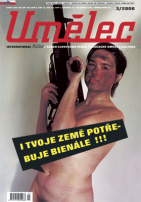




















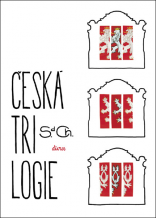
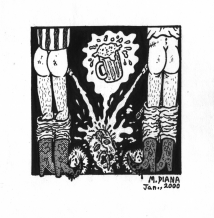
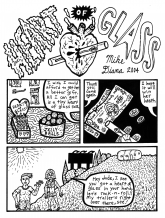
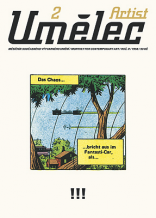


 We Are Rising National Gallery For You! Go to Kyjov by Krásná Lípa no.37.
We Are Rising National Gallery For You! Go to Kyjov by Krásná Lípa no.37.
Comments
There are currently no comments.Add new comment